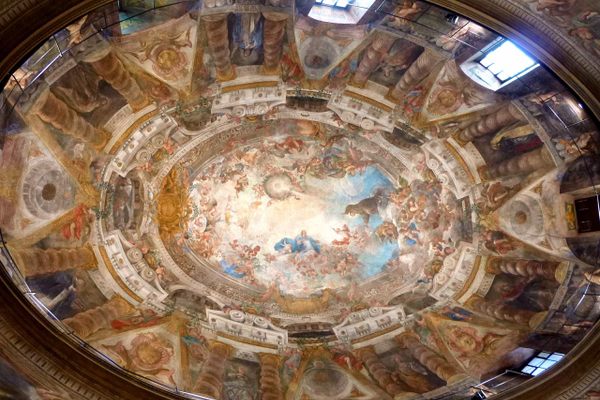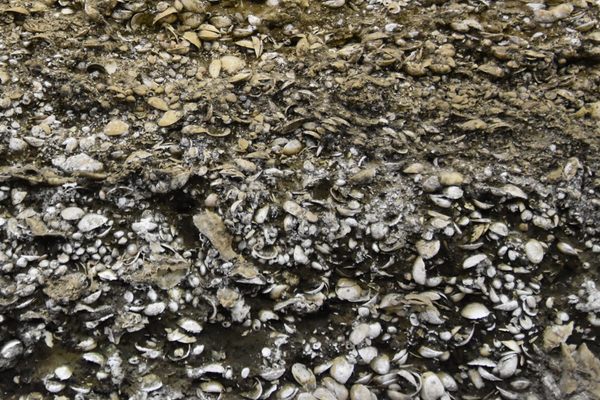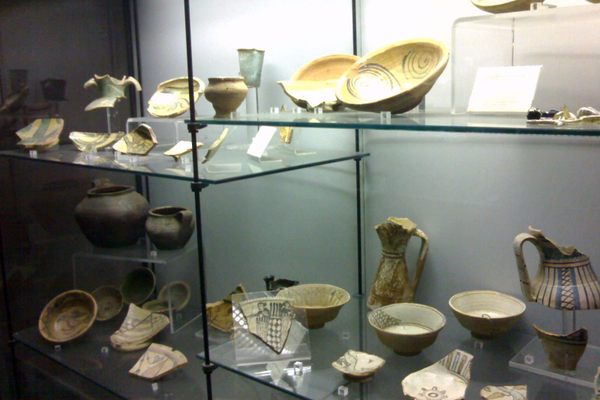AO Edited
Gran Vía Museum and Palacios Pavilion
A small museum displays some of the artifacts discovered during a subway station renovation.
When work meant to improve accessibility and modernization of the Gran Vía station in Madrid began in August 2018, it was anticipated to last one year. But that work slowed down when archaeological remains of all kinds were found on the site, extending the timeline by two years. Gran Vía, one of the oldest stations in the metro network, was built between 1917 and 1919. Access was made at that time, through a stone pavilion designed by the architect Antonio Palacios. The pavilion housed an old elevator and a spiral staircase that surrounded it. In 1970, the elevator and the staircase were removed, the hole was covered, and the pavilion moved to the hometown of Palacios in Porriño (Pontevedra) where it is now located in a park.
A new canopy—an exact replica of the original, down to stone from the same quarry—was built to compensate for the lost architectural heritage. When the pit was re-excavated to prepare for the installation of a new elevator, functional elements were found such as beams, steps with old advertisements, handrails, and more. Reliefs decorated with lion heads and a large municipal coat of arms were also recovered from the site.
All these items were designed by Palacios, who in addition to being a promoter of the metro network and designing auxiliary buildings such as the Nave de Motores de Pacífico (Pacífico Engine Shed), also designed the station decorations. He used white tiles to try to offer a more luminous image of the metro and combined them with cobalt borders, typical of the Galician architect’s style.
But the excavation brought more surprises and other archaeological remains were found that delayed the work even more. The so-called “Casa de Astrearena” is one of the most interesting. Dating from the 18th century, it was the home of Don Pedro de Astrearena, Marquis of Murillo. On the ground floor of the building, which was demolished in 1915, there were several rooms that were used as shops, and that give an idea of the commercial importance of this entire area of Madrid. Under the building, there were other underground rooms, possibly previous to the Casa de Astrearena itself, which were used as warehouses. One was even used as a tavern—many bottles of wine, siphon, or brandy have been found inside, as well as glasses and coins.
A great variety of objects of daily life have also appeared: perfume boxes, pitchers, pots, cups, pieces of glazed ceramics from Talavera from the 16th century, pharmacy bottles, buttons, dominoes, thimbles, as well as a wide variety of coins ranging from the 15th to the 19th centuries.
All of this has led the Metro de Madrid to exhibit the items recovered from the site in a small museum set up inside the station, along with information panels on these findings and the excavation process carried out.
Know Before You Go
Admision is free. It's not necessary to purchase a subway ticket to visit the museum.
Plan Your Trip
The Atlas Obscura Podcast is Back!























Follow us on Twitter to get the latest on the world's hidden wonders.
Like us on Facebook to get the latest on the world's hidden wonders.
Follow us on Twitter Like us on Facebook